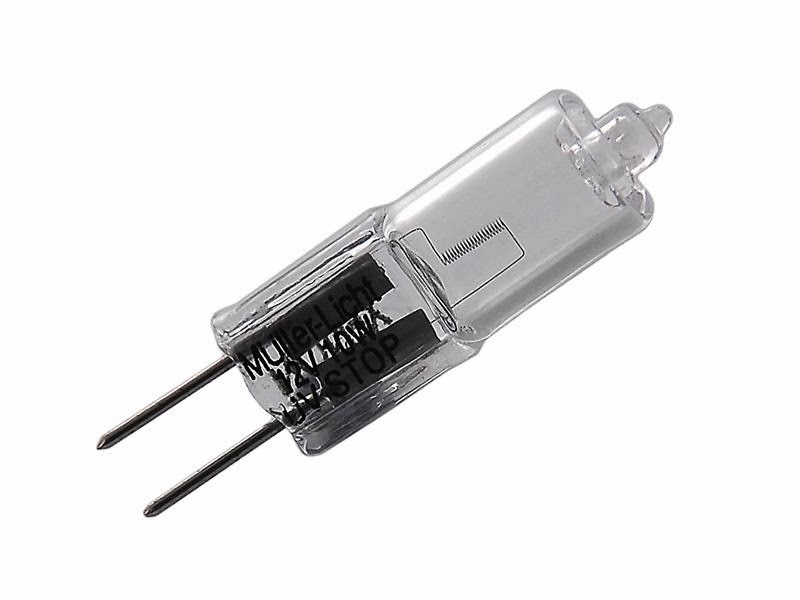260 Mod: LED lighting
One of the biggest power draws on most boats is it's lighting. Incandescent lights are one of the most inefficient uses of electricity known, closely followed by its cousin, resistive heating.
All of this changed in the last 5 years with the introduction of LED lighting. These solid state devices are more than 10x as energy efficient as older filament bulbs, and last much longer, perhaps for the life of the boat. Sadly the First 260 was designed and spec'ed before the introduction of LED lighting, so the boats did not come equipped with them from the factory. Thankfully, there are ways to retrofit this technology into the First 260.
All of the internal fixtures on the boat contain G4 halogen bulbs. While small and quite bright, these bulb run very hot, and burn out quickly. The fixtures are shaped to take these bulbs and these bulbs only. Changing the fixtures would be a mess affair. Lets try and avoid that.
Fortunately we are not alone in this thinking. Several outfits have designed replacement LED bulb that slip right into the existing fixtures.One of these companies is MarineBeam, who makes very nice replacement bulbs. And one of these has a neat trick up its sleeve.
As you can see, the Marinebeam LED bulb has the same power pins as the standard G4 bulb, but contains an array of LEDs on a board designed to fit into the typical fixture. This fixture is always the same size, because there is a standard heat/light reflector typically used with the bulbs. With the LED array you get the same amount of light for 1/10 the power, which is very good. But what is the trick?
The trick is the ability to show RED vision preserving light as well as white. Some specialty fixtures can do this, but require a re-install. The MarineBeam does this by first starting red, but switching to white if you toggle the power quickly. In practice it is very easy to do. This video explains it.
The lens on the First 260 fixtures twist off with a slight turn counter-clockwise. You can then pull the old G4 bulbs out. When replacing the lens, be sure the pins line up with the base. It is a little tricky; best done with lots of light. Test the switch. If misaligned it will not turn on. The good news is that you should only have to do this once!
We use these on BlueJ and are very happy. Not only does it cut down power consumption, but preserves your night vision as well.
Regarding navigation lighting, outfits like MarineBeam will sell sell you a BAY15 LED bulb for your mast top tri-color nav light. An easy upgrade. But there also is a way to add to First 260 navigational lighting and make up for a design deficiency. How? The 260 does not come with and anchor light; nor it is wired (or switched) for one. Adding one means another switch on the panel, and another wire up the mast, a lot of work.
UPDATE - While the below is still true, a new product from Marinebeam is an even better solution than the NASA fixture described below. You can read about it in the blog entry HERE.
Thankfully the folks at NASA Marine in the UK have come up with a solution; a Nav/Anchor light that uses one set of 12v wires. Cleverly it reverses polarity to switch from Nav to anchor, so only 2 power wires are needed, and not 4. An included rotary switch switches modes.
The light includes a mounting bracket to secure it to the mast top. As regular anchor lights can consume over 1 amp or 12V power, this light's 0.1 amp consumption is a lot easier on your batteries.
Details of the light at NASA Marine are HERE.
The light is harder to find in the USA but Ultimate Passage carries it, available HERE.
A worthwhile update.
All of this changed in the last 5 years with the introduction of LED lighting. These solid state devices are more than 10x as energy efficient as older filament bulbs, and last much longer, perhaps for the life of the boat. Sadly the First 260 was designed and spec'ed before the introduction of LED lighting, so the boats did not come equipped with them from the factory. Thankfully, there are ways to retrofit this technology into the First 260.
All of the internal fixtures on the boat contain G4 halogen bulbs. While small and quite bright, these bulb run very hot, and burn out quickly. The fixtures are shaped to take these bulbs and these bulbs only. Changing the fixtures would be a mess affair. Lets try and avoid that.
Fortunately we are not alone in this thinking. Several outfits have designed replacement LED bulb that slip right into the existing fixtures.One of these companies is MarineBeam, who makes very nice replacement bulbs. And one of these has a neat trick up its sleeve.
As you can see, the Marinebeam LED bulb has the same power pins as the standard G4 bulb, but contains an array of LEDs on a board designed to fit into the typical fixture. This fixture is always the same size, because there is a standard heat/light reflector typically used with the bulbs. With the LED array you get the same amount of light for 1/10 the power, which is very good. But what is the trick?
The trick is the ability to show RED vision preserving light as well as white. Some specialty fixtures can do this, but require a re-install. The MarineBeam does this by first starting red, but switching to white if you toggle the power quickly. In practice it is very easy to do. This video explains it.
The lens on the First 260 fixtures twist off with a slight turn counter-clockwise. You can then pull the old G4 bulbs out. When replacing the lens, be sure the pins line up with the base. It is a little tricky; best done with lots of light. Test the switch. If misaligned it will not turn on. The good news is that you should only have to do this once!
We use these on BlueJ and are very happy. Not only does it cut down power consumption, but preserves your night vision as well.
Regarding navigation lighting, outfits like MarineBeam will sell sell you a BAY15 LED bulb for your mast top tri-color nav light. An easy upgrade. But there also is a way to add to First 260 navigational lighting and make up for a design deficiency. How? The 260 does not come with and anchor light; nor it is wired (or switched) for one. Adding one means another switch on the panel, and another wire up the mast, a lot of work.
UPDATE - While the below is still true, a new product from Marinebeam is an even better solution than the NASA fixture described below. You can read about it in the blog entry HERE.
Thankfully the folks at NASA Marine in the UK have come up with a solution; a Nav/Anchor light that uses one set of 12v wires. Cleverly it reverses polarity to switch from Nav to anchor, so only 2 power wires are needed, and not 4. An included rotary switch switches modes.
The light includes a mounting bracket to secure it to the mast top. As regular anchor lights can consume over 1 amp or 12V power, this light's 0.1 amp consumption is a lot easier on your batteries.
Details of the light at NASA Marine are HERE.
The light is harder to find in the USA but Ultimate Passage carries it, available HERE.
A worthwhile update.






Comments
Post a Comment